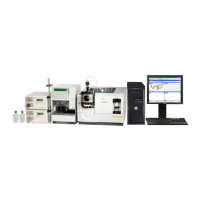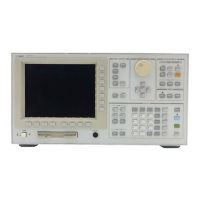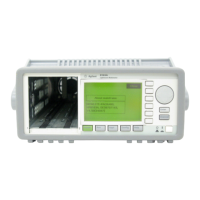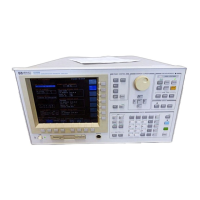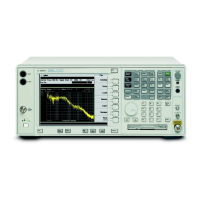The Polynomial Format
Synthesis using the Ratio-of-Polynomials format is called polynomial. For
polynomial data, the synthesis table is split into two columns: the left side for
the numerator polynomial and the right side for the denominator polynomial.
Table entries are interpreted as coefficients of the s polynomial.
The first line in the synthesis table corresponds to the numerator and
denominator coefficients for s
0
, the second line corresponds to s
1
, and the nth
line corresponds to s
n
−1
.
A 20th-order polynomial is the highest-order polynomial entry in the synthesis
table.
The Polynomial Equation
To express your transfer function in polynomial format, use the following
formula:
where:
K (first conjugate term) is the system Gain
This formula is the basis for interpreting polynomial data in the synthesis table.
Polynomial coefficients are in Hertz. During synthesis, the analyzer replaces s
with jf (where f is frequency in Hertz).
Hs K
as as as as
bs bs bs b s
n
n
m
m
()
( ... )
(...)
=
+++
+++
−
−
1
0
2
1
3
2
1
1
0
2
1
3
2
1
Agilent 35670A
Operator's Guide Synthesis Option 1D3
15-11
